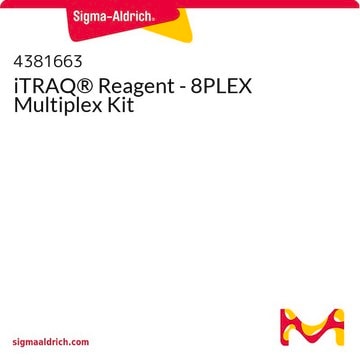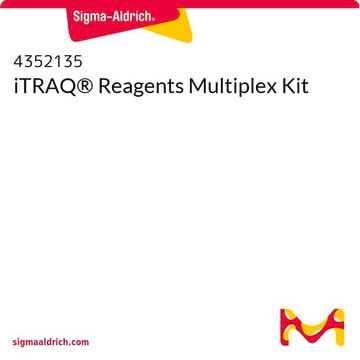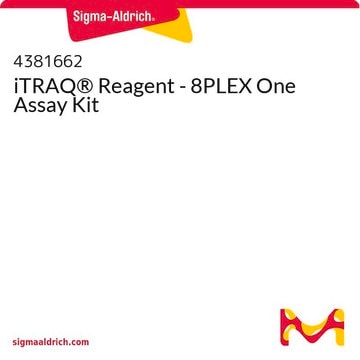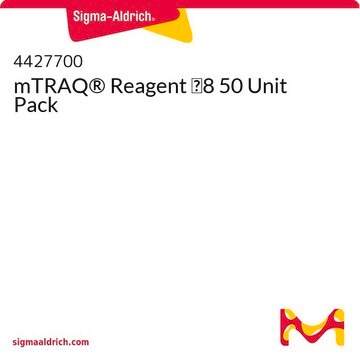4381664
iTRAQ® Reagent - Multiplex Buffer Kit
Sinónimos:
isobaric tags for relative and absolute quantitation, buffer kit
Seleccione un Tamaño
492,00 €
Seleccione un Tamaño
About This Item
492,00 €
Productos recomendados
Condiciones de envío
dry ice
temp. de almacenamiento
−20°C
Descripción general
Aplicación
Nota de análisis
Información legal
Palabra de señalización
Danger
Frases de peligro
Consejos de prudencia
Clasificaciones de peligro
Eye Irrit. 2 - Flam. Liq. 2 - Skin Irrit. 2 - STOT SE 3
Órganos de actuación
Central nervous system
Código de clase de almacenamiento
3 - Flammable liquids
Punto de inflamabilidad (°F)
53.6 °F - closed cup
Punto de inflamabilidad (°C)
12.0 °C - closed cup
Elija entre una de las versiones más recientes:
¿Ya tiene este producto?
Encuentre la documentación para los productos que ha comprado recientemente en la Biblioteca de documentos.
Los clientes también vieron
Filtros activos
Nuestro equipo de científicos tiene experiencia en todas las áreas de investigación: Ciencias de la vida, Ciencia de los materiales, Síntesis química, Cromatografía, Analítica y muchas otras.
Póngase en contacto con el Servicio técnico











